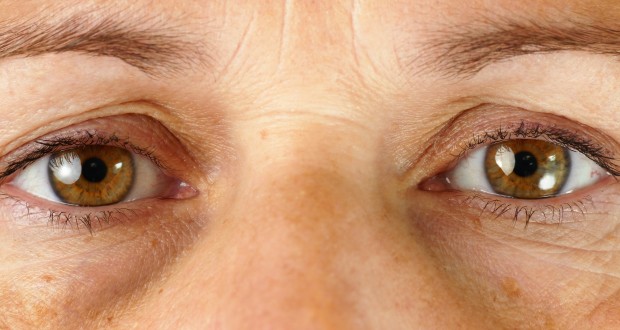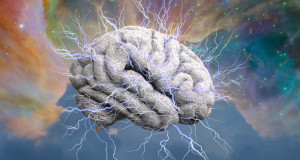You don’t have to be a medical doctor to know that the aging process often exacts a heavy toll on our joints, body strength, waistline and hearing. In keeping with this pattern, our eyesight also begins to decline as we pass into middle age and beyond. Some individuals, however, fare worse than others, developing such vision-hindering conditions as macular degeneration. While medical science has yet to develop a safe, effective and practical way to completely reverse the effects of macular degeneration, the impact of this condition can be lessened through proper care and treatment.
Macular Degeneration isn’t limited to a small, unlucky group of aging patients; in fact, this chronic eye disease is the leading cause of major vision loss for individuals over age 60. Macular Degeneration attacks the center of the eye’s retina, an area known as the macula, causing it to steadily weaken and deteriorate. This has potentially devastating consequences for your vision – the retina senses incoming light, and proceeds to send impulses to the brain via the eye’s optic nerve. In addition, the macula allows us to see the fine details of relatively nearby objects.
There are two distinct variations of Macular Degeneration – Dry Macular Degeneration and Wet Macular Degeneration. The details of each of these conditions are further examined below:
Dry Macular Degeneration – This form of the disease involves the presence of yellow, extra-cellular material known as drusen. In small amounts, drusen has a negligible impact on the patient’s vision. This changes as drusen clusters begin to grow in size and number, as patients begin to notice that their vision seems to “dim” or distort images and words while they are reading. As the disease progresses, the macula’s light-sensing cells become thin and weak; eventually, these cells fully atrophy, leading to blind spots in the afflicted person’s vision. By the time Dry Macular Degeneration has reached its latter stages, patients often lose all central vision, making activities such as reading or driving all but impossible.
Wet Macular Degeneration – Bordering the retina is the choroid, a layer of tissue and blood vessels. The choroids serve the double purpose of providing the retina with nutrients. Wet Macular Degeneration causes the choroid layer’s blood vessels to swell to an unusually large size, pushing them underneath the macula (this process is referred to by doctors as choroidal neovascularization).
Eventually, these swollen vessels are unable to contain their contents, and begin to leak blood directly into the macula. As can be expected, this negatively affects the patient’s vision; the patient begins to develop blind spots, and starts seeing straight lines as wavy. As with the disease’s “dry” form, wet macular degeneration can ultimately lead to complete loss of central vision.
The vast majority – some 90% – of patients suffering from Macular Degeneration develop the “dry” from of the disease. Fortunately, they usually do not lose their central vision. Interestingly enough, a confirmed case of Dry Macular Degeneration can cause a patient to contract the “wet” form of the condition. Wet Macular Degeneration is generally considered the more worrisome of the two diseases; the majority of patients who lose central vision due to Macular Degeneration are inflicted with the disease’s “wet” form.
Risk Factors and Your Health
Like many other chronic conditions, patients with a family history of macular degeneration may stand a higher than average risk of developing this disease. Macular Degeneration can also be caused by the following factors:
- A regular smoking habit
- High blood pressure (hypertension)
- Obesity
- Being of Caucasian descent
- High cholesterol
Of course, the most prominent factor in developing Macular Degeneration is age; the overwhelming majority of patients who suffer from this affliction are over the age of 60. If you suspect that you are at an elevated risk of developing Macular Degeneration, please consult with your doctor.
Subtle (and Not So Subtle) Symptoms of Macular Degeneration
Macular Degeneration is very similar to Glaucoma, in that it can often go undiagnosed in its earliest stages. This is due a lack of noticeable symptoms. Often times, a patient will not realize that something is amiss until the condition has spread to both eyes. The first warning sign is an inability to accurately perceive straight lines; a patient with worsening Macular Degeneration will frequently view such lines as wavy, and will eventually struggle with accurately determining the shape, size and location of lines.
As the condition progresses into its advanced stages, the patient’s entire central vision may become distorted. Other symptoms include difficulty in perceiving colors and the appearance of dark, blurry blotches in the patient’s vision (these blotches can also be white in color). If you are experiencing any of the preceding symptoms, schedule an appointment with an ophthalmologist as soon as possible.
Diagnosing and Treating the Disease
It is not at all difficult for Macular Degeneration to be diagnosed; a doctor can usually identify it through a routine eye exam. Drusen particles, one of the earliest symptoms of macular degeneration, are fairly easy to spot by a trained ophthalmologist. Additionally, your doctor will likely administer an Amsler grid test. An Amsler grid consists of both horizontal and vertical straight lines, arranged in a grid-like or “checkerboard” fashion. A small dot is usually placed in the center of the grid.
A person with healthy eyes will have no problems accurately viewing and describing the grid. For patients with Macular Degeneration, the story is quite different; the gridlines look wavy, and the circular dot appears off-center and warped. The patient may also claim that some lines are “missing.”
The ophthalmologist also has the option of performing an angiography, a procedure in which a patient’s eyes are dyed through a compound injected into the arm. The dye is often either an orange or green color, allowing it to clearly stand out against the background of the eye. As the dye compound passes through the eye, it highlights the presence of extraneous and/or leaking blood vessels. The location of these troublesome vessels is recorded through photographs taken by the ophthalmologist.
While modern medicine has yet to produce a reliable cure for Macular Degeneration, doctors can stem the tide of the disease through a variety of treatment methods.
Anti-angiogenesis drugs – Ophthalmologists frequently treat Macular Degeneration by preventing the formation of new blood vessels near the macula. To achieve this goal, doctors usually turn to anti-angiogenesis drugs. These medications have earned a solid reputation of not only stopping further deterioration of the macula, but of also enabling patients to possibly regain lost vision. To reap the full benefits of anti-angiogenesis drugs, a patient may have to receive additional treatments during follow-up appointments.
Vitamin Supplements – At first glance, it may seem as if vitamin supplements would hardly have an impact in treating Macular Degeneration. Research conducted by the National Eye Institute of the National Institutes of Health, however, suggests that certain vitamins may prove beneficial for some Macular Degeneration patients. In a report entitled AREDS (Age-Related Eye Disease Study), the National Eye Institute found that ingesting vitamins E, C, zinc, beta carotene and copper can preserve the vision of individuals diagnosed with Macular Degeneration. The study’s results were applicable to patients with both intermediate and advanced forms of the disease.
Laser Therapy – For some Macular Degeneration patients, laser lights can be used to eradicate abnormal blood vessels near the macula.
Photodynamic laser therapy – This type of treatment can be though of as a less-potent form of laser therapy. In addition, photodynamic laser therapy is a two-step process. For the first step, the ophthalmologist injects the patient’s bloodstream with a light-sensitive drug, which quickly reaches the blood vessels inside the eye. A cold laser is then beamed onto the patient’s eye, activating the drug inside of the irregular blood vessels near the macula.
Low Vision Aids – In addition to medications, vitamins and surgeries, an ophthalmologist can also treat Macular Degeneration by recommending that a patient wear or use certain medical devices, commonly known as low vision aids. Examples of low vision aids include hand-held reading magnifiers, high intensity lamps, miniature telescopes, and special closed circuit TV’s (CCTVs). These CCTVs work by transmitting printed material onto a computer monitor, significantly magnifying the text of the written material.
In recent decades, medical researchers have devoted a significant amount of effort toward developing new methods for treating Macular Degeneration. These treatments are still in their experimental stage; as a result, their effectiveness cannot be fully guaranteed. Should you feel that such treatments are necessary, please consult with your doctor beforehand.
Submacular Surgery – This procedure aims to surgically extract extraneous blood and vessels from the eye.
Retinal Translocation – Like submacular surgery, retinal translocation involves halting and reversing the effects of macular degeneration through surgery. Despite there similar goals and modus operandi, retinal translocation is actually a much more complex procedure. To alleviate the increasing damage caused by abnormal blood vessels, a retinal translocation calls for a surgeon to relocate the macula into a healthy area of the retina. With this task accomplished, the surgeon is free to eliminate the excessive vessels with a surgical laser.
Living with Macular Degeneration
While Macular Degeneration can cause total blindness, such cases are generally few and far between. The vast majority of patients with this condition still retain their ability to perform routine tasks, albeit with a reduced ability to focus on objects in their direct line of sight.
The toll that Macular Degeneration takes on an individual’s health depends on the form of the disease contracted by the patient. As stated earlier, the “wet” variant of this illness is both rarer and more potent that its “dry” counterpart. Consequentially, people with Wet Macular Degeneration tend to suffer a far greater decline in physical wellbeing. For people with Dry Macular Degeneration, the prognosis is less worrisome, as patients with this form of the disease typically maintain most of their vision.
Macular Degeneration is a very persistent foe, as many patients see their symptoms return following treatment. To avoid this scenario, patients are urged to closely monitor the condition of their eyes, and to strictly adhere to their ophthalmologist’s medical advice. A patient can greatly reduce the physical impact of Macular Degeneration by having the disease treated in a timely manner (this strategy applies to both initial and recurring symptoms).
With the exception of Glaucoma, it is difficult to think of a more onerous eye-related ailment than Macular Degeneration. This disease can fester for years before its symptoms become a noticeable hindrance; once this occurs, a patient might need several rounds of treatment to keep Macular Degeneration at bay. By carefully monitoring your vision, being aware of your personal risk factors and having your eyes checked regularly, you can greatly increase your odds of maintaining healthy eyesight well into your later years.
 Natural Knowledge 24/7 Educate yourself with nutrition, health and fitness knowledge.
Natural Knowledge 24/7 Educate yourself with nutrition, health and fitness knowledge.






